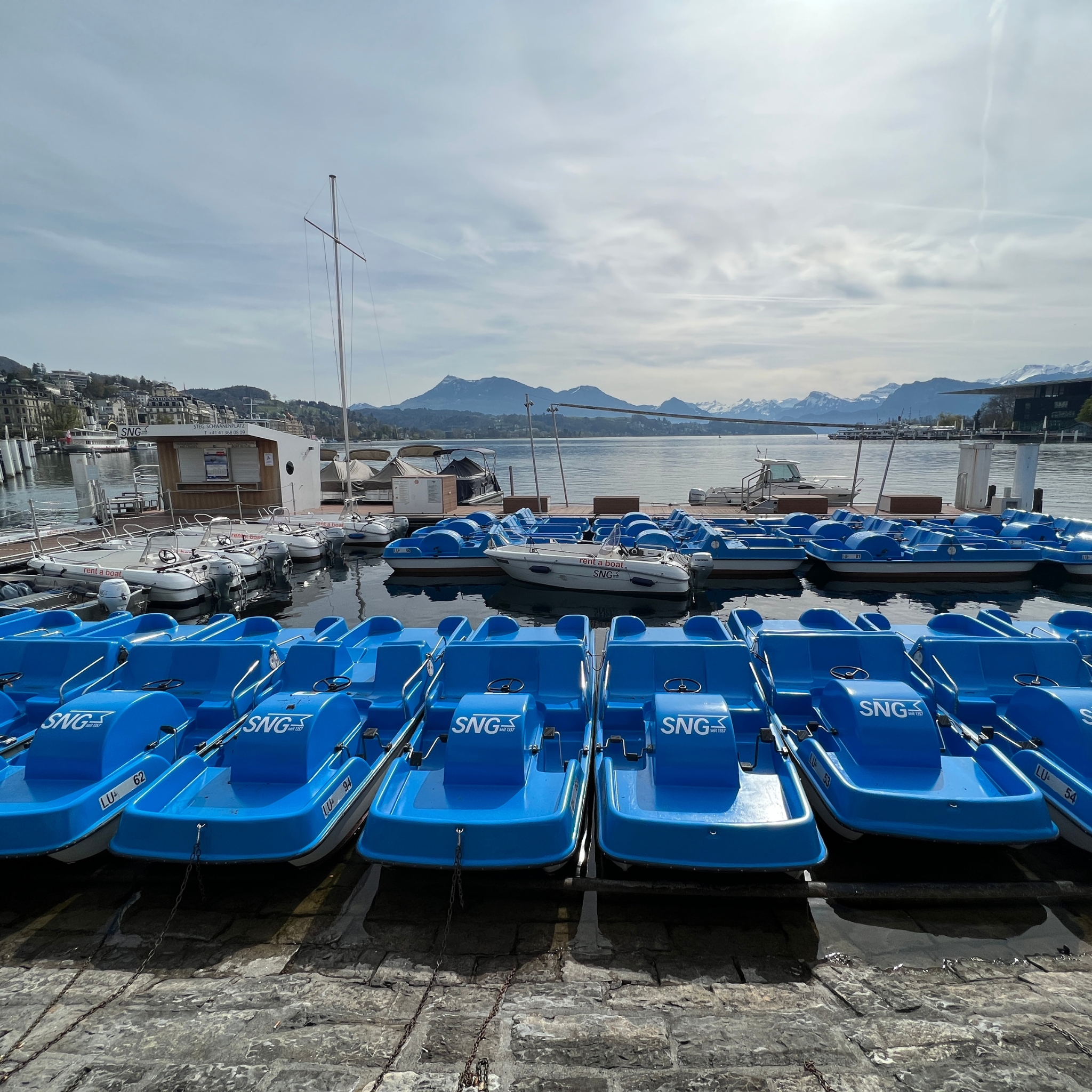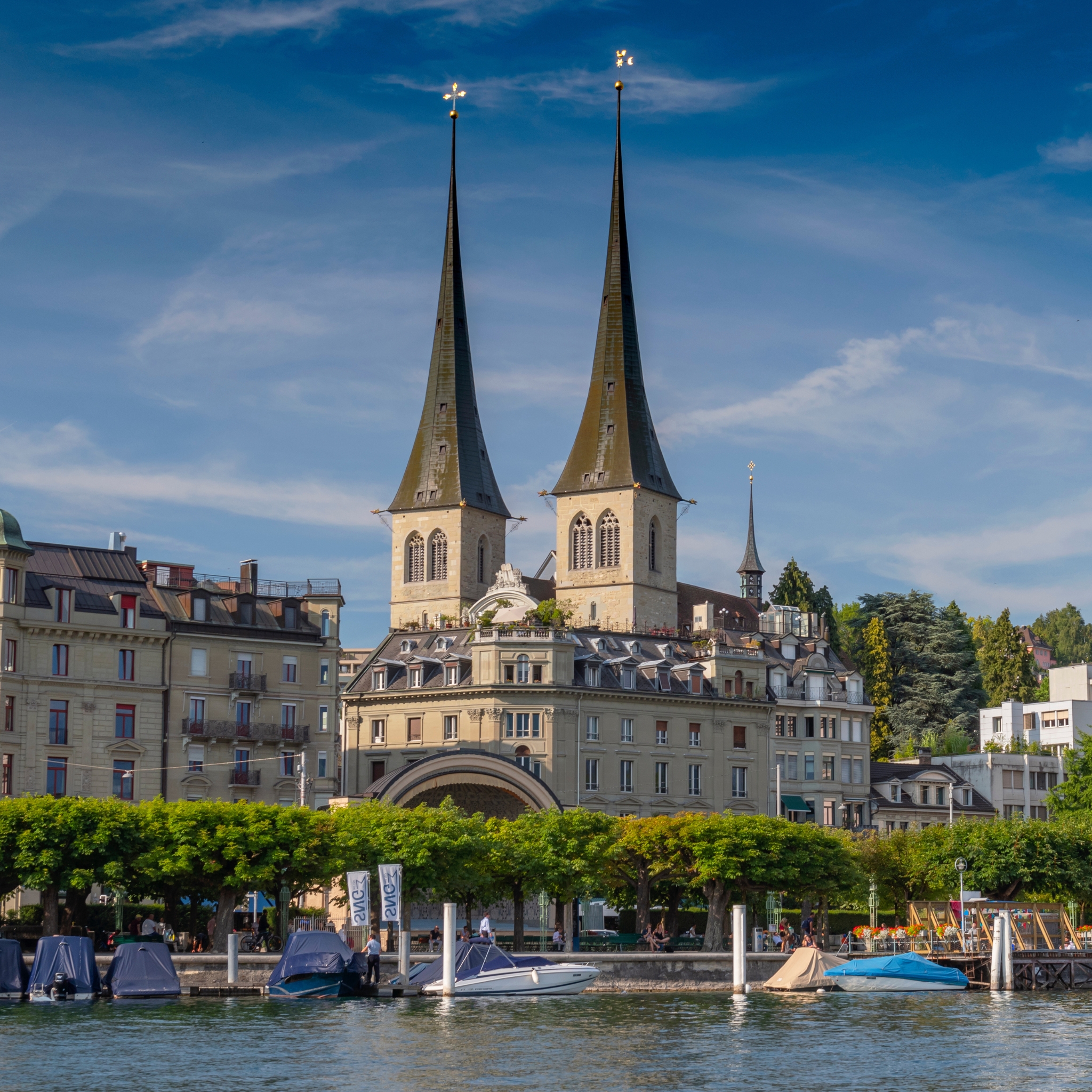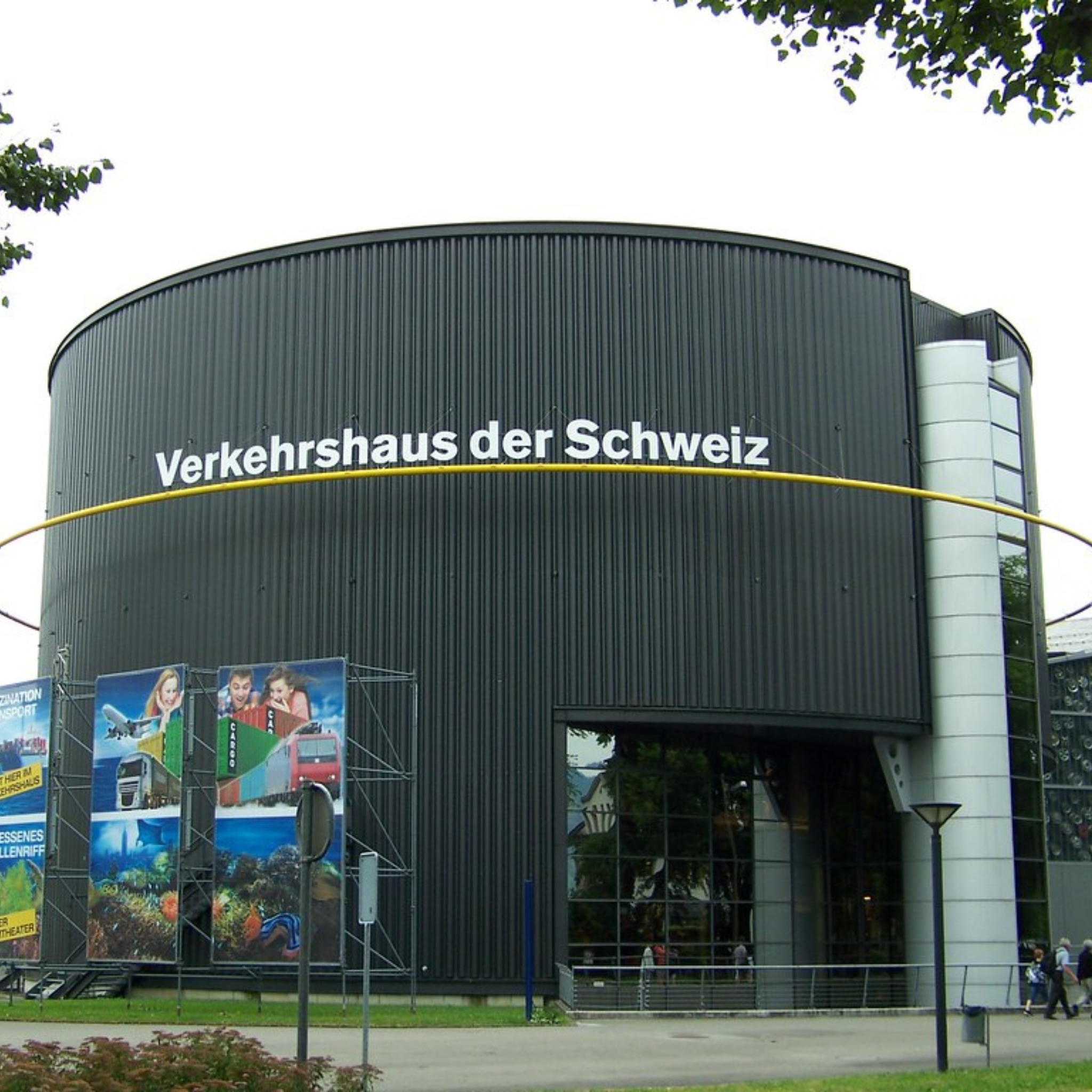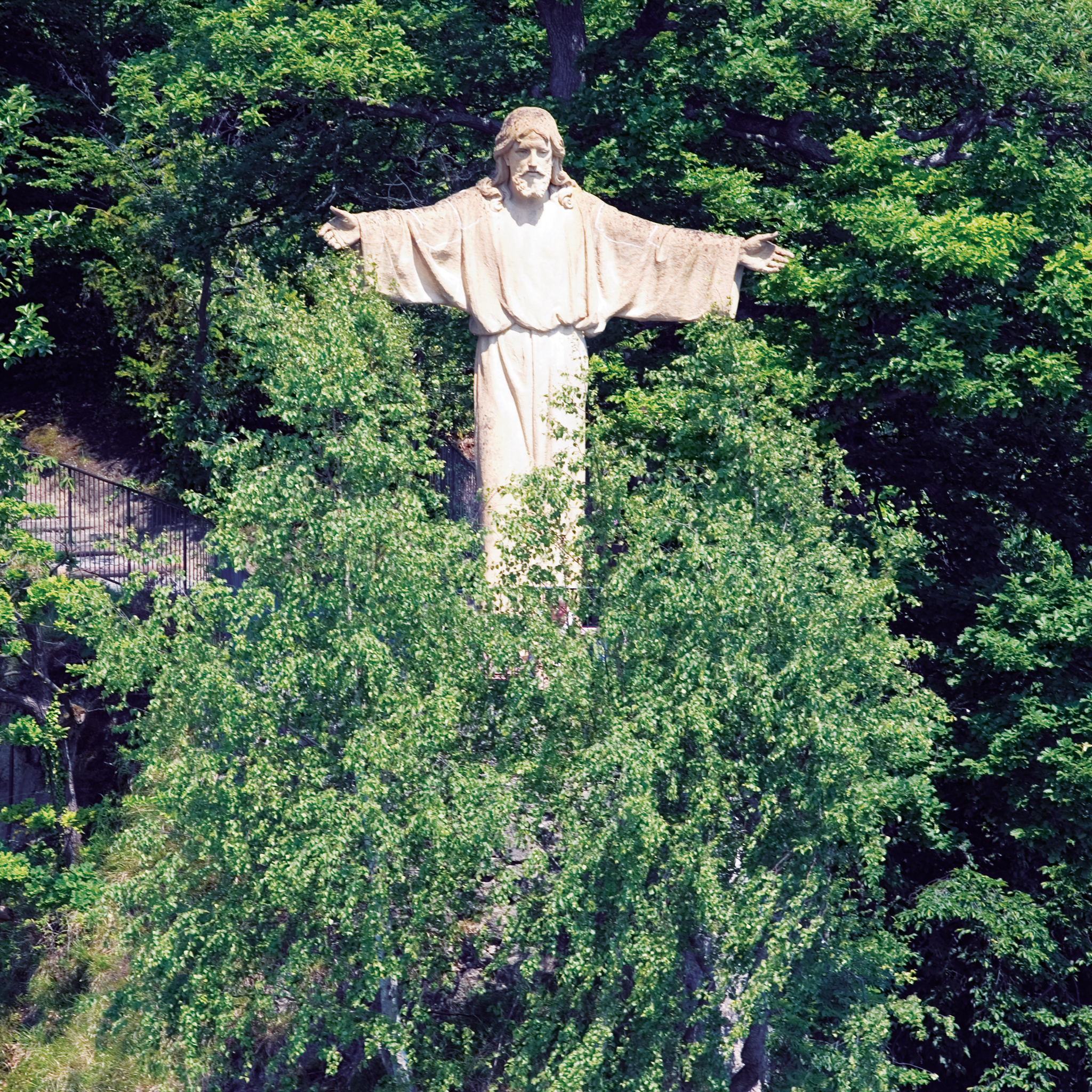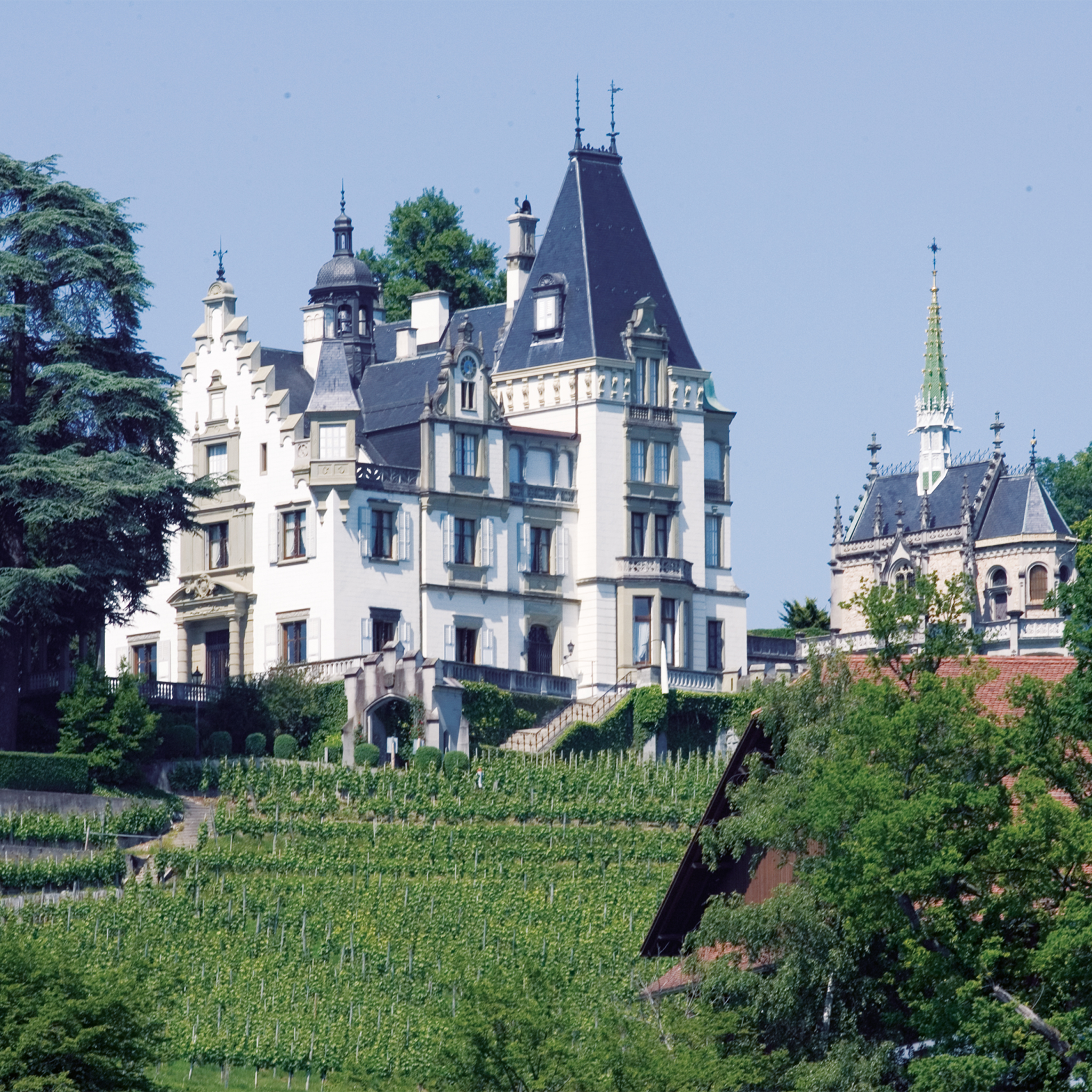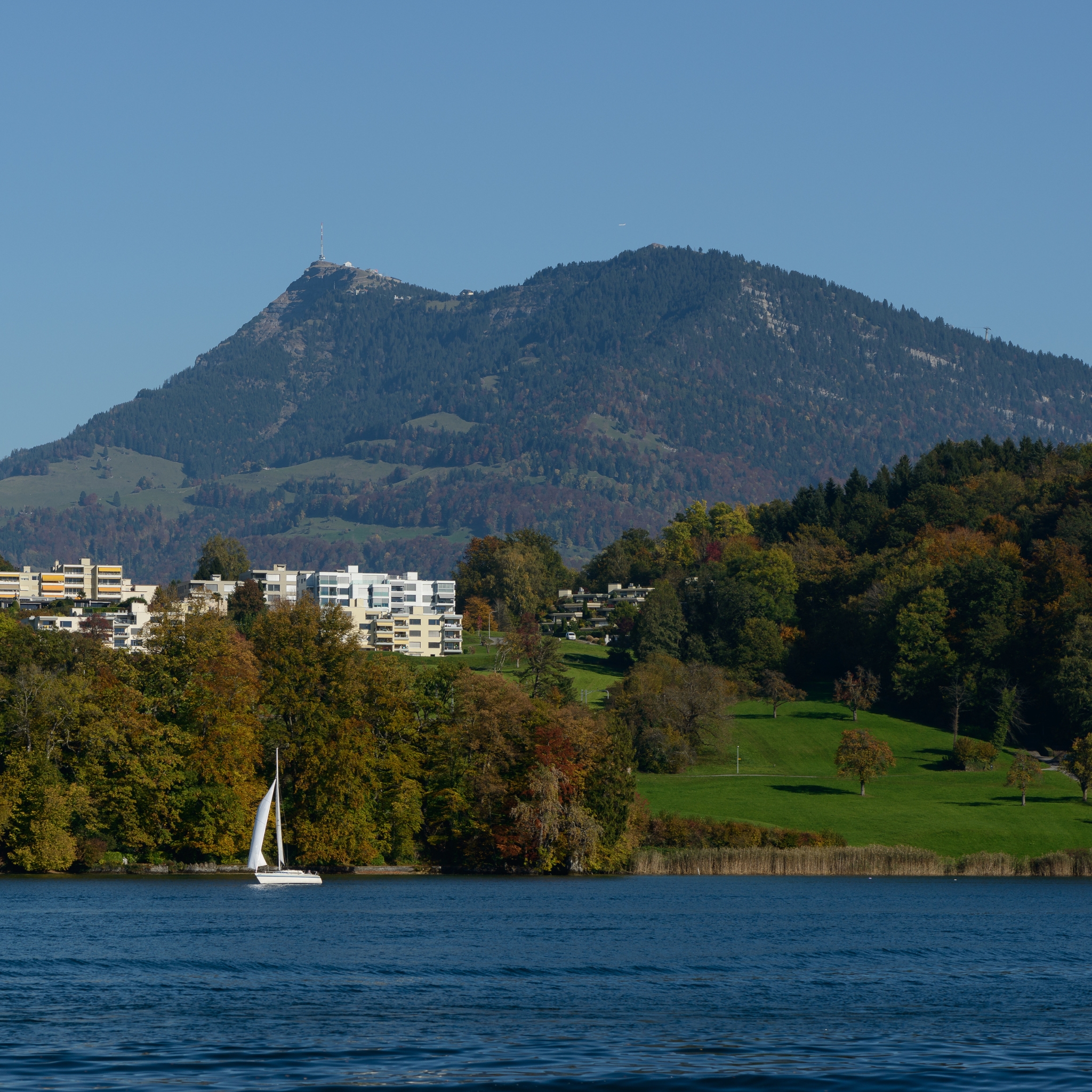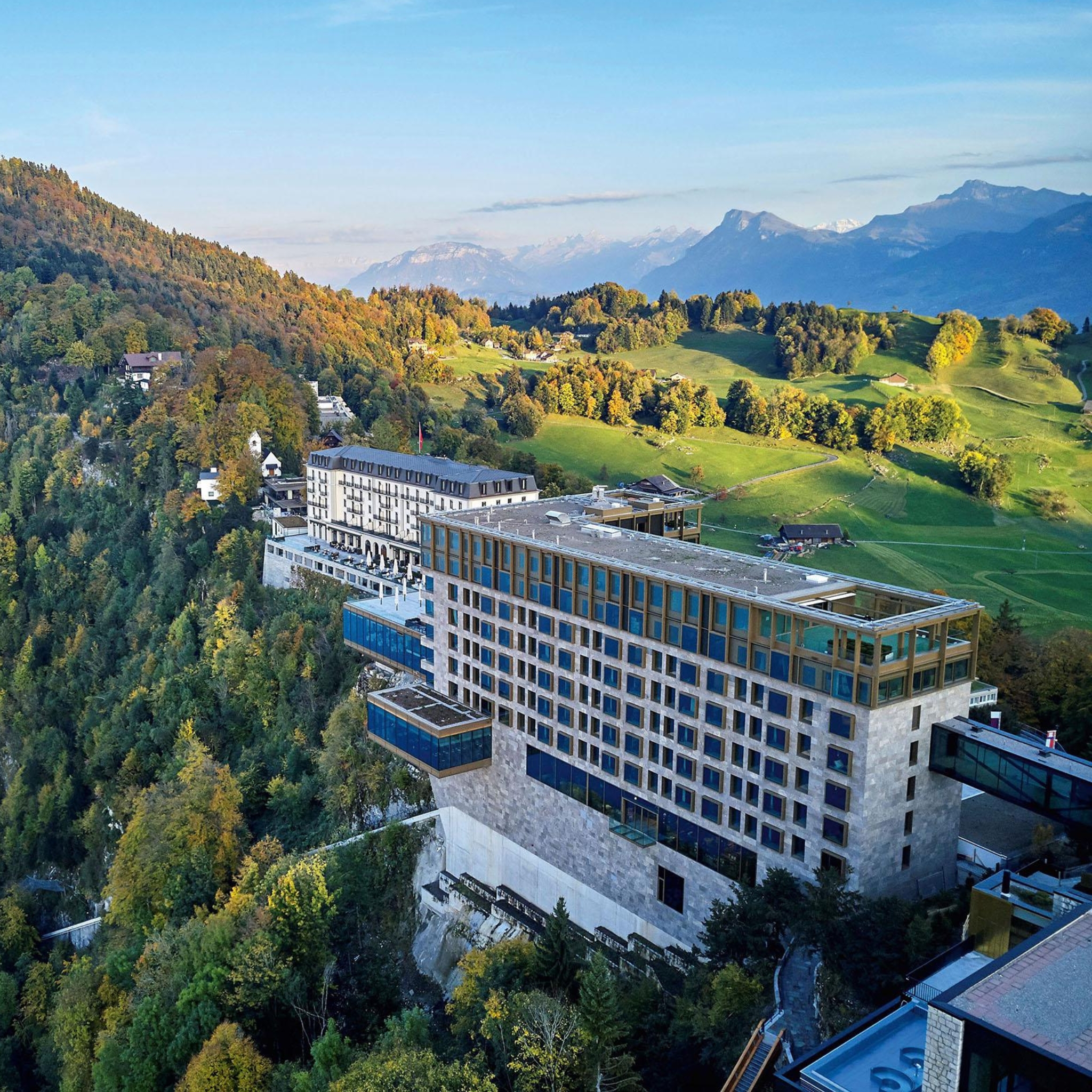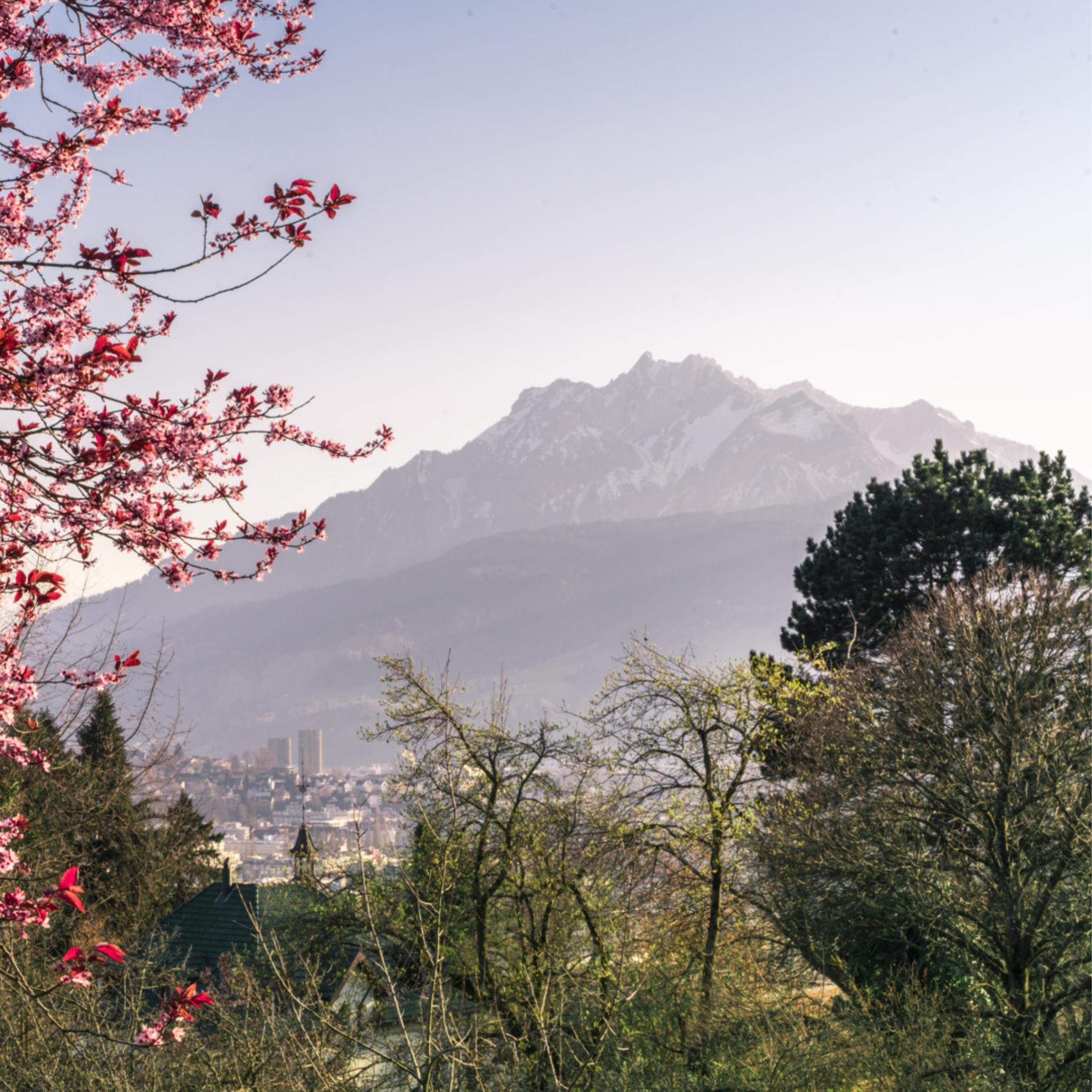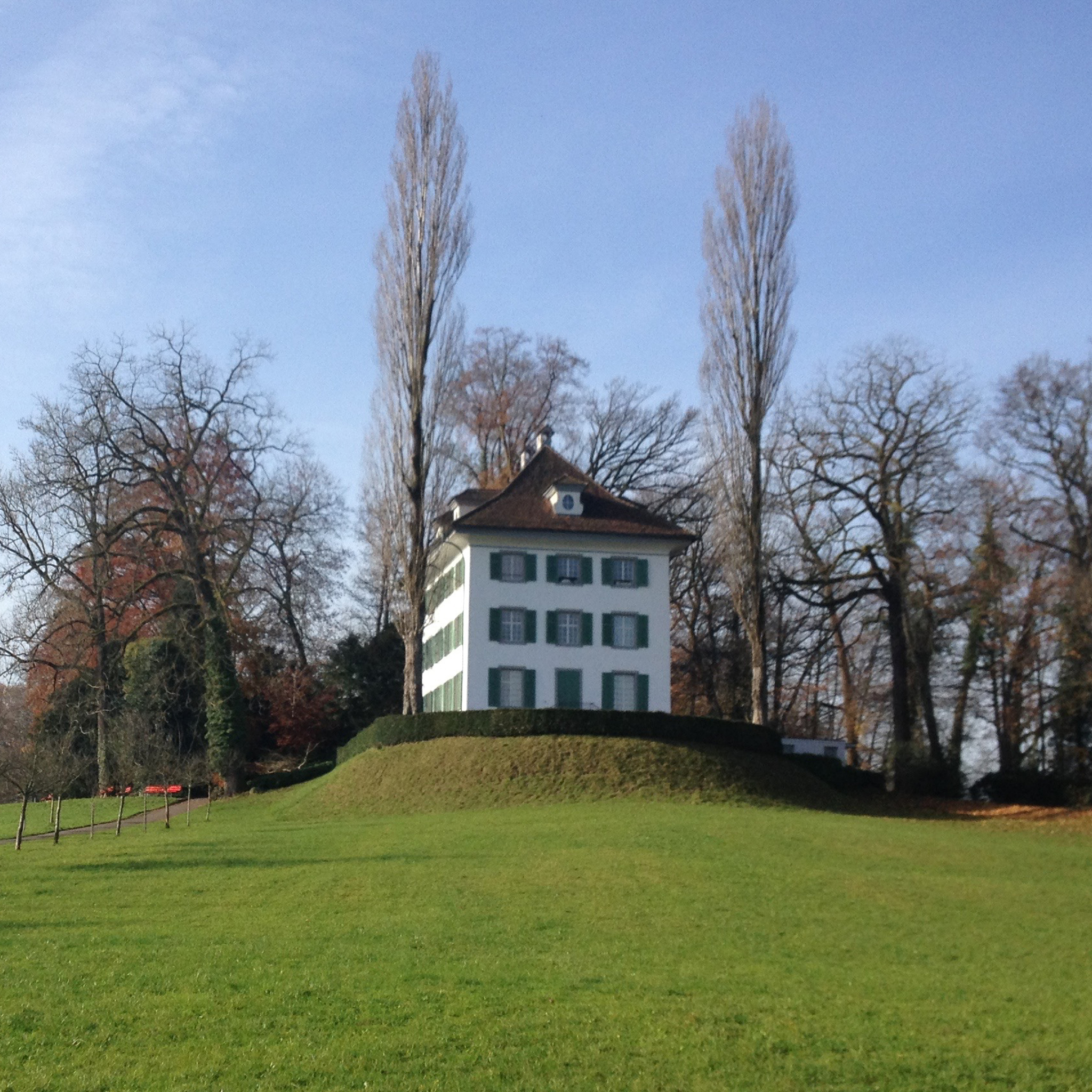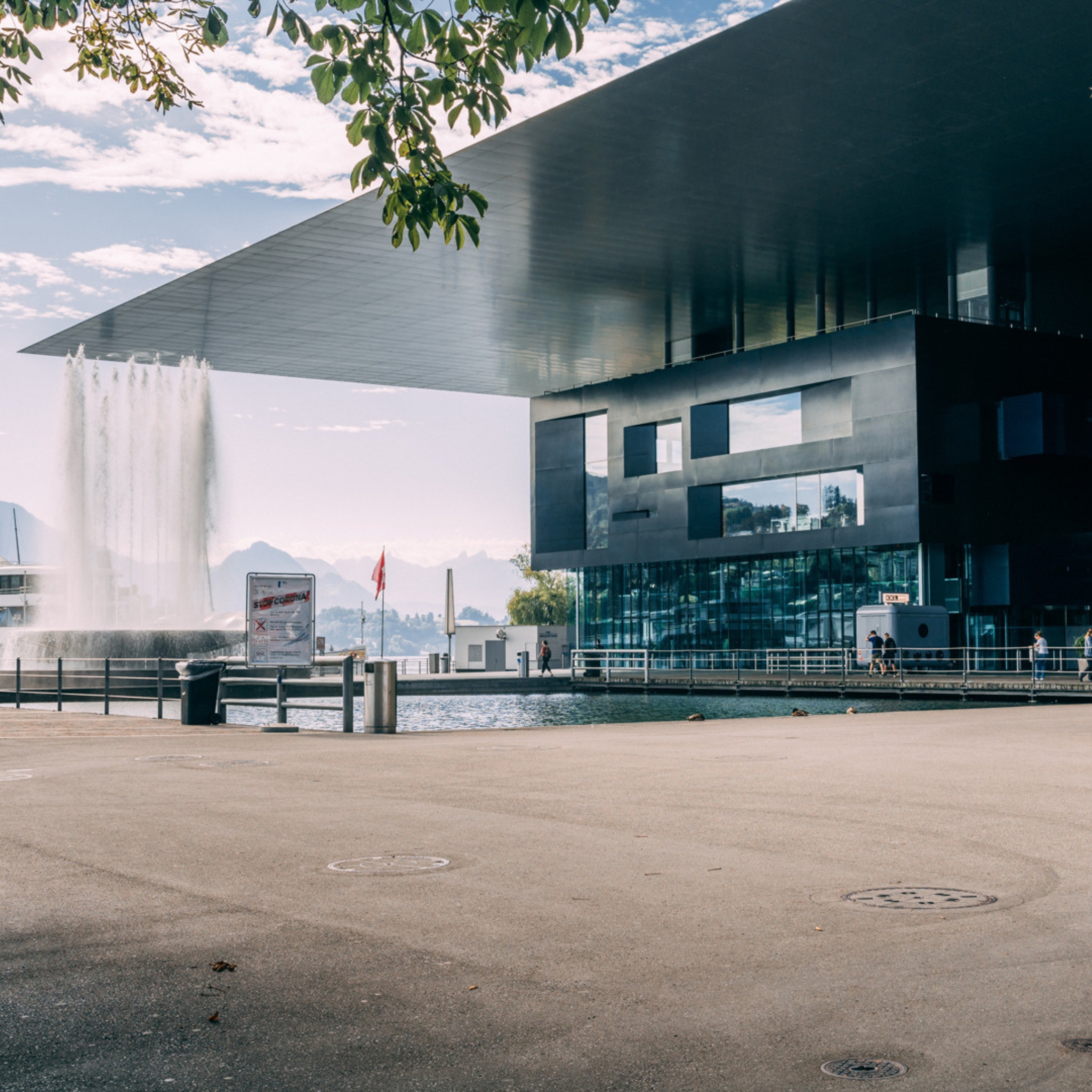1. Lake Lucerne
Welcome on board this passenger ship of the St Niklausen Schiffgesellschaft, or SNG.
We’ll start by giving you a few background facts and figures about the lake you’ll be cruising around over the next hour. The German name of the lake, the Vierwaldstättersee, translates as the “Lake of the Four Forested Sites”, referring to the four adjoining cantons of Uri, Schwyz, Unterwalden and Lucerne, which used to be known as “forested sites”. With a surface area of 114 square kilometres and a shoreline of about 140 kilometres, Lake Lucerne is one of the biggest lakes in Switzerland. It reaches 214 meters at its deepest point.
2. Church of St Leodegar
The Church of St Leodegar, or Court Church, with its two eye-catching spires is architecturally one of the most important churches in Switzerland and a landmark in the city skyline. The site, in the precincts of an 8th century monastery, is considered to have been the core of the city which was founded in 1178. The church was completely destroyed in a fire in 1633. But it took only 11 years for a new one to be built and consecrated.
Along the embankment you’ll also see some of Lucerne’s most prestigious hotels. They are an indication of the city’s increasing prosperity starting in the middle of the 19th century, thanks to the coming of steamships, rail and the numerous mountain railways.
3. Museum of Transport
The Swiss Museum of Transport celebrated its 50th anniversary in 2009. One of Switzerland’s success stories, it is marching confidently into the future. Today it’s not only the most important museum of technology in the country, but also the museum which attracts the largest number of visitors. Since it opened in 1959 it has amassed a unique collection of historical and contemporary items and documents, enabling it to present a vivid history of transport and mobility in both special exhibitions and in its permanent display.
It houses such unique attractions as the IMAX film theatre, the Swissarena aerial photograph, and the Swiss Chocolate Adventure, along with the only Planetarium of its kind in Switzerland. Other things to be seen there include a museum of the works of Swiss artist Hans Erni. All in all, a visit to the Museum of Transport is an enthralling and unforgettable experience. It also contains a Congress Center and various restaurants and bars, catering for the needs of visitors.
4. Statue of Christ
The statue of Christ on the promontory in the lake dates from around 1900. It was donated by the then owner of Meggenhorn Castle in gratitude for her recovery from a serious illness.
5. Meggenhorn Castle
“Mekkenhorn” was first mentioned in 1240 in a contract between the monastery at Engelberg and Count Rudolf III. It was at this time that the first castle, Neu Habsburg, was built on the island just off the promontory. Right up to the 16th century parts of the estate still belonged to the canons of St Leodegar. Later, Meggenhorn became a self-contained property with its own farm. A villa was built on Meggenhorn in about 1674/75, with a small bell tower and impressive gardens to the west of it. After 1803 the flourishing villa evolved into a stately home.
The castle in its current shape was built between 1868 and 1870 for an industrial magnate from Mulhouse. A countess from Paris bought the castle in 1886 and had the chapel built in neo-Gothic style. In 1920 the property was purchased by a textile magnate from Zurich.
Since 1974 it has been in the hands of the commune of Meggen. Today the castle is a popular location for special events and weddings.
6. Rigi
Rising up ahead of us is the Rigi, the “Queen of Mountains”. The Rigi has a long and important history in the development of tourism. It caught the attention of travellers very early and in the 19th century people were already going up it, either on foot, or being carried in litters.
The foundation stone for the Hotel Rigi Kulm was laid at its summit in 1814, and it opened after two years of construction. It enjoyed considerable success and a second hotel opened on top of the Rigi in 1856.
In 1871, when the Rigi railway started operating from Vitznau, it became much less of an effort to get to the top and anyone could do it. The construction of what is now the second-oldest cogwheel railway in Switzerland led to an increase in tourism on the Rigi. In 1875 a third hotel opened on the summit, the palatial Grand-Hotel Schreiber with 300 beds, two restaurants and numerous lounges. It took three years to build. The sumptuous hotel was the last word in luxury. The most eminent chefs, including Escoffier, and the best maîtres d’hôtel were there to meet the wishes of the distinguished clientèle.
Just before the hotel opened, the railway from Arth up to the summit came into operation as well.
A few years ago there was a further addition to the facilities on the mountain, in the shape of the Rigi Kaltbad Mineral Baths & Spa designed by the famous Swiss architect Mario Botta. The current facilities offer a varied programme for young and old, as well as for families and couples.
7. Bürgenstock
The Bürgenstock too was a well-known holiday resort and congress centre by the end of the 19th century. The Bürgenstock funicular, making the mountain accessible from the landing stage at Kehrsiten, has been running since 1888. From the 1950s onwards, the place became a holiday destination for numerous stars and starlets, as well as for leading personalities from the worlds of politics and business.
On the highest part of the mountainside is the 153 metre high Hammetschwand Lift, the highest exterior lift in Europe. It was completed in 1905 as part of the tourism boom in the region. The lift connects the picturesque rock path with the Hammetschwand lookout point, from where visitors can enjoy a magnificent view over Lake Lucerne and the surrounding mountains. If the weather is good, you can see not only the Stanserhorn, but also the Bernese Alps with the Eiger, Mönch and Jungfrau.
The buildings on the Bürgenstock were showing their age when in 2015 investors from Qatar started to transform them into a huge luxury resort. It is hoped that in their new splendour they will attract stars and starlets once again. But there are countless attractions on offer for everyone else too. The new owners welcome all guests.
8. Pilatus
The Pilatus is the symbol of Lucerne and Lake Lucerne. The steepest cogwheel railway in the world goes up the far side of the mountain from Alpnachstad to Pilatus-Kulm at the top. The railway was built between the years 1886 and 1889. The 4.6 kilometre long line has a maximum gradient of 48%. There is also a gondola lift and cable car up to the Pilatus from the Lucerne suburb of Kriens.
Once arrived at 2132 meters above sea level, guests are faced with two establishments with stunning views: the historic Pilatus Kulm*** Superior mountain hotel, and the Hotel Bellevue. Visitors to the summit have four restaurants with different kinds of menu to choose from.
The mountain is wreathed in legend. According to one story, its name is connected with the Roman governor Pontius Pilate. And a good-natured dragon is also said to live on the mountain – its name has been given to one of the SNG’s passenger ships, the “MS Dragon”.
9. Richard Wagner Museum
Among the tall trees on the little peninsula of Tribschen you can see a villa in 18th century style. Today the Richard Wagner Museum is housed in what was once the composer’s residence. The aristocratic Am Rhyn family of Lucerne bought the magnificent estate as a summer residence in the 18th century, and rented it to Wagner from 1866 to 1872.
During his time here Wagner completed his opera “The Mastersingers of Nuremburg” and worked on his “Ring Cycle”. The city of Lucerne bought the building in 1933 and two years later established a museum dedicated to the life and work of the famous composer.
10. City of Lucerne and KKL
To round off your cruise you have a wonderful panoramic view of Lucerne’s historic centre. In the background is the old city wall with its fortified towers, on the banks of the river Reuss are parts of the Old City, and in the foreground is the world-famous timber chapel bridge. It was destroyed by fire in 1993, but thanks to donations from Switzerland and abroad it was rebuilt in less than a year.
Finally, right next to the station is Lucerne’s striking Culture and Convention Centre, known simply after its German initials as the KKL, which opened in the year 2000. The design is the work of the famous French architect, Jean Nouvel. Housed together under the Centre’s roof are the Lucerne Art Museum, a convention centre and the legendary concert hall with its acclaimed acoustics, which can seat 1,860 persons.
